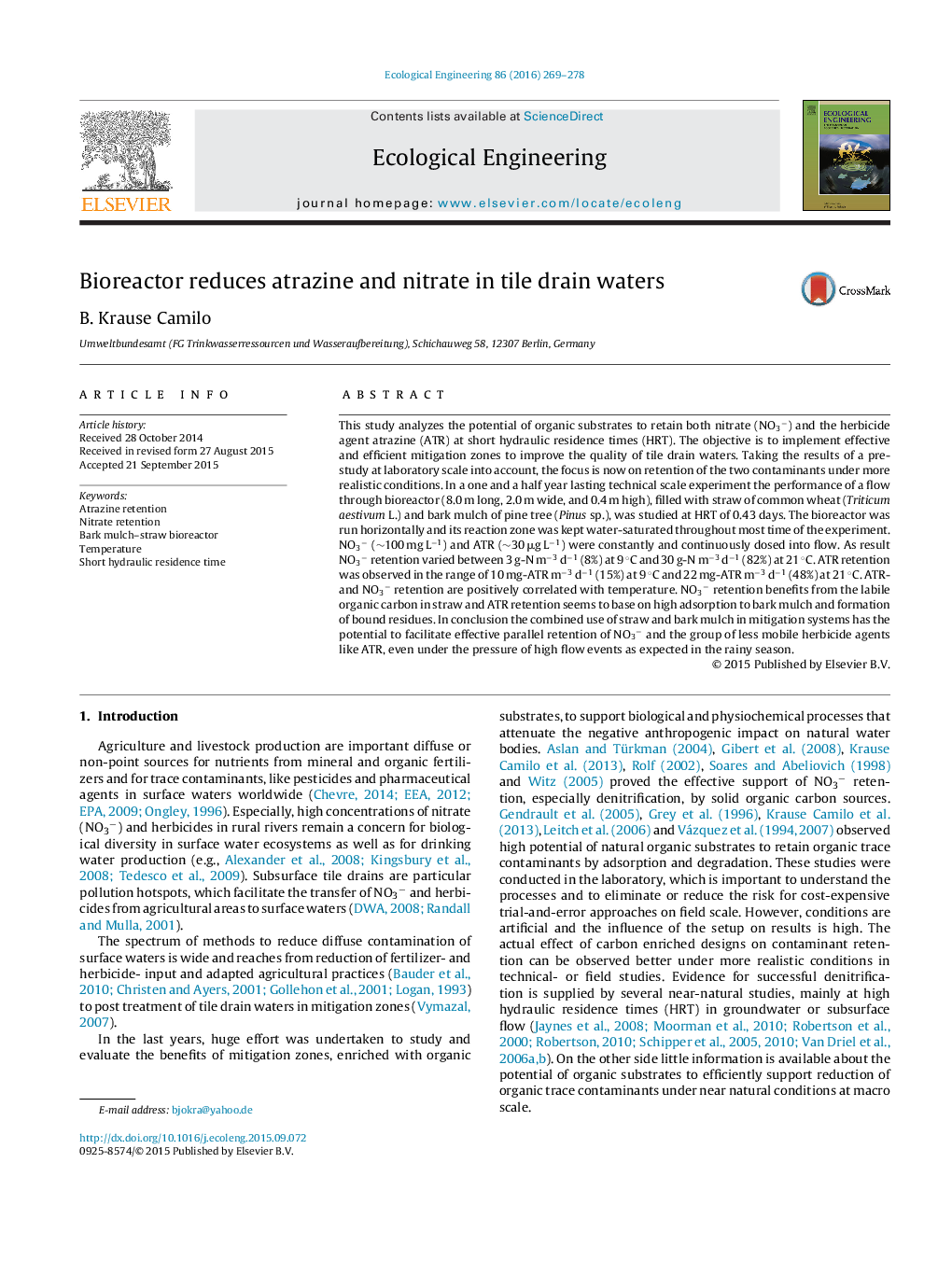| کد مقاله | کد نشریه | سال انتشار | مقاله انگلیسی | نسخه تمام متن |
|---|---|---|---|---|
| 4388938 | 1618013 | 2016 | 10 صفحه PDF | دانلود رایگان |
• Straw and bark mulch support efficient denitrification under high flow conditions.
• Mix of both substrates enables effective parallel atrazine and nitrate retention.
• Retention of atrazine is mainly caused by formation of bound residues.
• Retention of atrazine and nitrate is positively correlated with temperature.
• Straw and bark mulch could notably improve the efficiency of mitigation zones.
This study analyzes the potential of organic substrates to retain both nitrate (NO3−) and the herbicide agent atrazine (ATR) at short hydraulic residence times (HRT). The objective is to implement effective and efficient mitigation zones to improve the quality of tile drain waters. Taking the results of a pre-study at laboratory scale into account, the focus is now on retention of the two contaminants under more realistic conditions. In a one and a half year lasting technical scale experiment the performance of a flow through bioreactor (8.0 m long, 2.0 m wide, and 0.4 m high), filled with straw of common wheat (Triticum aestivum L.) and bark mulch of pine tree (Pinus sp.), was studied at HRT of 0.43 days. The bioreactor was run horizontally and its reaction zone was kept water-saturated throughout most time of the experiment. NO3− (∼100 mg L−1) and ATR (∼30 μg L−1) were constantly and continuously dosed into flow. As result NO3− retention varied between 3 g-N m−3 d−1 (8%) at 9 °C and 30 g-N m−3 d−1 (82%) at 21 °C. ATR retention was observed in the range of 10 mg-ATR m−3 d−1 (15%) at 9 °C and 22 mg-ATR m−3 d−1 (48%) at 21 °C. ATR- and NO3− retention are positively correlated with temperature. NO3− retention benefits from the labile organic carbon in straw and ATR retention seems to base on high adsorption to bark mulch and formation of bound residues. In conclusion the combined use of straw and bark mulch in mitigation systems has the potential to facilitate effective parallel retention of NO3− and the group of less mobile herbicide agents like ATR, even under the pressure of high flow events as expected in the rainy season.
Journal: Ecological Engineering - Volume 86, January 2016, Pages 269–278
